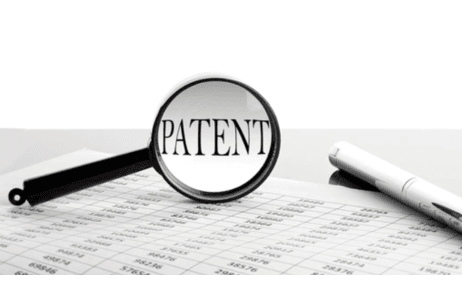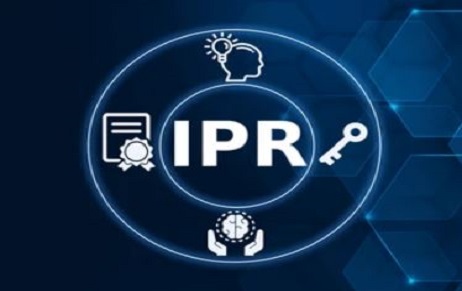Introduction In the realm of obtaining a patent right, conducting a ‘novelty search’ stands as…
The Concept Of Patent Mining In India
All prior art relevant to the invention should, ideally, be recognized in order to determine the uniqueness and inventive step of the invention. Due to different constraints such as language, paperwork, and so on, access to the prior art is limited, and it is impossible to uncover all prior art relevant to the innovation. However, running a search on the patent and literature databases can provide a significant amount of prior art. Patent documents are the most important intellectual resources for corporations, organisations, and individuals to safeguard their interests. However, due to the substantial information contained in patent filings, it can be difficult to consider owning such documents due to their length and richness. Patent mining allows inventors and patent holders to delve deeper into the assets and data linked with patents that have been issued.
What is Patent mining?
Patent mining is the process of reviewing, evaluating, and investigating patent-related papers in order to identify the most valuable assets and information associated with awarded patents.
Big and ancient companies that have been in business for a long time are likely to have a large number of unaccounted-for IPs, which they are unaware of. When they form a joint venture or combine, all of these intellectual properties are unaccounted for, and the companies have no knowledge of or comprehension of them. All of these IPs are lost throughout the restructuring process when they merge or form a joint venture.
As a result, patent mining assists these businesses in examining and researching documents pertaining to registered patents, and after discovering all of the company’s IP or Intellectual Properties, they estimate and create a portfolio of all of the Intellectual Properties in order to identify the best assets and valuable details that are most likely to be violated. It’s extremely similar to traditional mining, in which the miner utilizes their tools to dig out the most precious stones from the mine.
Patent mining is a complex and challenging operation in India due to the lack of appropriate sources. In India, there are few online resources that give comprehensive patent documents, and adequate search tools are also lacking.
The IPO, or Indian Patent Office, does not give a comprehensive official database; to do a Patent Mining task, a person or an individual or a person must visit multiple sources. Here are a few distinct sources:
- Web-based sources: Individuals who are unable to undertake thorough investigation and analysis after exhausting all official resources can benefit from online databases. These databases are designed to help anyone who want to do in-depth research on patent applications that have been filed and granted by the Indian Patent Office. This cause is supported by a number of commercial and public web databases. For example: Database of Indian Patents, etc.
- Patent Registry: All of the identified patent documents can be secured by filing a patent application at the patent office after doing comprehensive research in any of the databases. The full procedure for obtaining patent documentation is outlined in Chapter XIII of the Patents Acts of 1970, Section 67.
- Official Gazettes: The Indian Patent Office’s official gazette covers all patent filing information as well as data of all accepted patent applications in India. The gazette, on the other hand, provides relatively little information regarding the applications that have been filed.
- Ekaswa: The Technology Information Forecasting and Assessment Council has launched India’s first patent database (TIFAC). The Technology Information Forecasting and Assessment Council (TIFAC) established a Patent Facilitating Centre for Ekaswa in 1995. Universities, education institutes, government R&D organisations, and government departments can use Ekaswa’s free searching services. In most cases, a patent search is divided into three stages: A bibliographic report on patents granted or published in the United States, Europe, the PCT, and India is provided to the client at the first level. On the second level, abstracts of relevant patents are delivered in response to the client’s request. Finally, full-text patent documents are made available.
- Patent scope: Patent scope offers free searching services through the World Intellectual Property Organization (WIPO), allowing users to access a variety of patent-related documents from throughout the world. They give full-text information for worldwide PCT applications as well as access to patent documents from all participating national and regional jurisdictions. Patent scope offers a basic search function that allows users to perform in-depth research utilizing terms like FrontPage, Any Field, Full Text, ID/Number, Int. Classification, Names, and Dates. Not only that, but advanced search allows an individual to search complex queries by entering a limitless amount of terms. In the advanced search option, you may even search for field codes and Boolean expressions.
Need for patent mining in India
Organizations and enterprises all over the world are working hard to build their patent portfolios, and this is only feasible because people or individuals have begun to see the true worth of patent mining.
In India, patent mining is still in its early stages. If Indian companies opt to invest in this sector, they will be able to close all the loopholes and gaps that may prevent all of our Indian companies’ technology from being used.
Patent mining may be used to assist all large and small Indian firms and organisations in identifying key patents from their vast patent portfolios and recommending various ways to profit from these patents through licencing and litigation.
Companies and organisations utilize software tools to assess and evaluate their most valuable assets in order to classify and determine their value. Imagine how much wealth an Indian firm could create by recognizing all of these high-rated Patents that could be monetized for the company’s overall improvement.
This mining approach is also used to mine other companies’ patent portfolios, primarily in cross-licensing and patent due diligence circumstances. Companies or organisations can gain leverage over the other company or estimate all possible exploitations of a patent violation by the other company using proper patent mining.
The majority of Patent’s owners are unable to comprehend the issue and are unable to obtain a clear picture of the company’s valuable assets. This is usually owing to a large patent portfolio/multiple asset transfers as a result of a Merger and Acquisition (M&A) or the diversity of the technologies. However, in any given case, obtaining a competent appraisal of their patent portfolios is a necessary, and Patent Mining can greatly assist these organisations in dealing with such situations.
The basic goal of Patent Mining is to compile a patent portfolio and identify all of a company’s most valuable assets. Patent Mining can be used to categorize and analyze Patents to identify the top-of-the-line assets, even in situations where there are many Patent documents to deal with. This assessment can then be used to make crucial decisions about monetizing the Patents through litigation or licencing. Patent claim evaluation is critical since it identifies all of the top assets that, in a monetization campaign and business decisions, demand the most time and resources.
Conclusion
If we look at the competition among the biggest corporations, we can see that they need to invest in new things to be competitive, and patents are the exclusive rights to such ideas. Not only that, but we can see how IPs have a big impact on corporate value, which is why patents are so crucial. Even Indian firms have begun to recognize the importance of patents, yet there is still a lack of responsibility somewhere. Even if they have all of the necessary knowledge about new technologies in the country, they are unable to protect these technologies from infringement by other businesses.Patent mining can assist safeguard these companies from potentially risky situations, and if done correctly, it can generate a slew of new invention reports that the company was previously unaware of.
Author: Anuja Saraswat – a student of B.A.LL.B (Hons.) from NMIMS Kirit P. Mehta School of Law (Mumbai), in case of any queries please contact/write back to us via email [email protected] or contact us at IIPRD.




